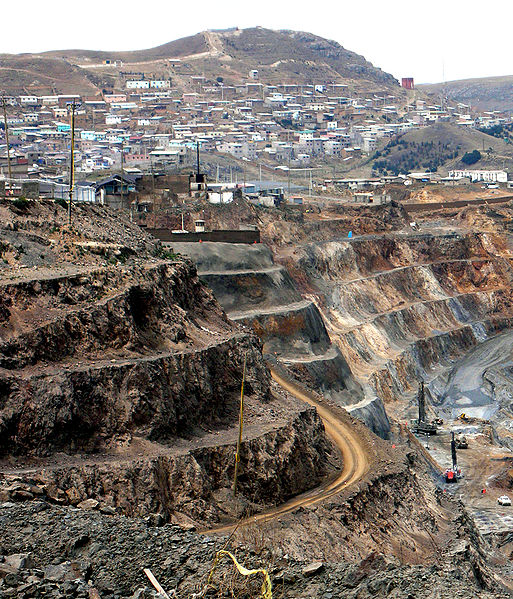Heavy metals from open-pit mining can spread up to 30 kilometers
Residents of Cerro de Pasco, Peru, teamed up with scientists to monitor pollution in their city
We all need clean, safe drinking water to survive. But access to it remains tenuous is many parts of the world, with an estimated 780 million people without it. Unpolluted soils are essential for growing nontoxic crops and raising healthy livestock. Pollution from mining can leave water sources non-potable for decades, and heavy metals (like lead and arsenic) can seep into the soil. Heavy metal accumulation in our bodies can cause circulation problems, organ and nerve damage, and cancer.
Cerro de Pasco is a heavily-mined area in central Peru; based on lead deposits in lakes, we know it's been mined since the Tiwanaku and Wari empires, between about 400 and 1000 A.D. Today, open-pit mining activity continues, leaving a legacy of tailings ponds (a sort of rock-acid slurry) and discarded heaps of metal-rich rock. As rain and groundwater chemically react with these materials, metals dissolve and make their way into the groundwater and soils. They build up in crops and livestock, and ultimately are ingested by people living in the area.

An open pit mine in Cerro de Pasco
Ottocarotto on Wikimedia Commons (CC BY-SA 3.0)
As soils degrade with agricultural use and climate change, those heavy metals get blown around as dust, redistributing the pollutants far and wide. It can be difficult to trace where these hazardous metals end up accumulating. This is where citizen- scientists stepped in.
Coordinated by the Universidad Nacional del Centro del Perú, residents around Cerro de Pasco and the surrounding Junín Plain mobilized to collect nearly 400 soil and plant samples to be tested for heavy metals. Their goal was to help determine how widespread pollution from the mine is in the area.
After testing the samples, the researchers found contamination as far as 30 km away. As suspected, heavy metals like lead, copper, and arsenic had been blown along with the dust, then taken up by grasses growing in the plains. Thanks to a dedicated local community, the mine at Cerro de Pasco should have its wake-up call: the mine needs to dispose of its waste in a safer and more secure way.